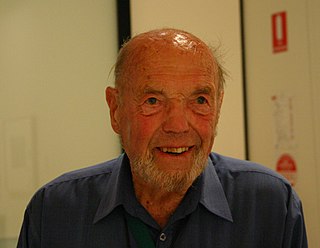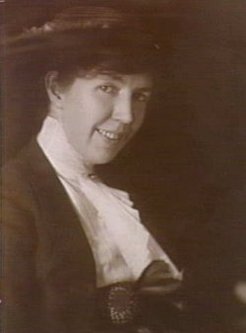
Helmut Newton was a German-Australian photographer. The New York Times described him as a "prolific, widely imitated fashion photographer whose provocative, erotically charged black-and-white photos were a mainstay of Vogue and other publications."

Denise Anne Christina Drysdale is an Australian television presenter, variety entertainer, actress, singer, dancer and comedian. She is often affectionately known as 'Ding Dong', a nickname invented by fellow performer Ernie Sigley. She was formerly a co-host of the morning show Studio 10.

Photography in Australia started in the 1840s. The first photograph taken in Australia, a daguerreotype of Bridge Street, Sydney, was taken in 1841.

Wolfgang Georg Sievers, AO was an Australian photographer who specialised in architectural and industrial photography.

Walter Bentley Woodbury was an inventor and pioneering English photographer. He was an early photographer in Australia and the Dutch East Indies. He also patented numerous inventions relating to various aspects of photography, his best-known innovation being the woodburytype photomechanical process.

Antoine Julien Nicolas Fauchery was a French adventurer, writer and photographer with republican sympathies. He participated in the national uprising in Poland in 1848, opened a photographic studio in Melbourne, Australia, in 1858, and was commissioned to accompany the French forces as they progressed to Beijing during the last stage of the Second Opium War in 1860. He wrote thirteen long dispatches from the front-line for le Moniteur, the official French government newspaper. He died in Yokohama of dysentery.

Mary Maguire was an Australian-born actress who briefly became a Hollywood and British film star in the late 1930s.
Louis Athol Shmith was an Australian studio portrait and fashion photographer and photography educator in his home city of Melbourne, Australia. He contributed to the promotion of international photography within Australia as much as to the fostering of Australian photography in the world scene.
Henry Talbot, born Heinz Tichauer was a German-Australian fashion photographer noted for his long association with the Australian fashion industry, particularly the Australian Wool Board.

Townsend Duryea and his brother Sanford Duryea were American-born photographers who provided South Australians with invaluable images of life in the early colony. Their parents were Ann Bennett Duryea (1795–1882), and Hewlett K. Duryea (1794–1887), a land agent, possibly a member of the family well known for starch manufacture in Glen Cove, Long Island, in New York City.
Mark Strizic was a 20th-century German-born Australian photographer, teacher of photography, and artist. Best known for his architectural and industrial photography, he was also a portraitist of significant Australians, and fine art photographer and painter known for his multimedia mural work.

John Cyril "Jack" Cato, F.R.P.S. was a significant Australian portrait photographer in the pictorialist style, operating in the first half of the twentieth century. He was the author of the first history of Australian photography; The Story of the Camera in Australia (1955)

May and Mina Moore were New Zealand-born photographers who made careers as professional photographers, first in Wellington, New Zealand, and later in Sydney and Melbourne, Australia. They are known for their Rembrandt-style portrait photography, and their subjects included famous artists, musicians, and writers of the era.

Georgina Alice Gregory was an Australian artist.
William Hoskins was a Shakespearean actor from England whose later career was mostly in Australia and New Zealand, reputedly "one of the best actors who has ever trod our stage".

Pegg Clarke was an Australian professional fashion, portrait, architectural and society photographer whose work, published frequently in magazines, was referred to by historian Jack Cato as being of "the highest standard."
George Benjamin William Lewis commonly referred to as G. B. W. Lewis, or G. B. Lewis, was an English circus performer, later a circus and theatre entrepreneur in Australia. He married in 1864 the actress and playwright Rose Edouin.
Irene Gladys Mitchell MBE was an Australian actress and theatre director, prominent in the little theatre movement in Melbourne.












